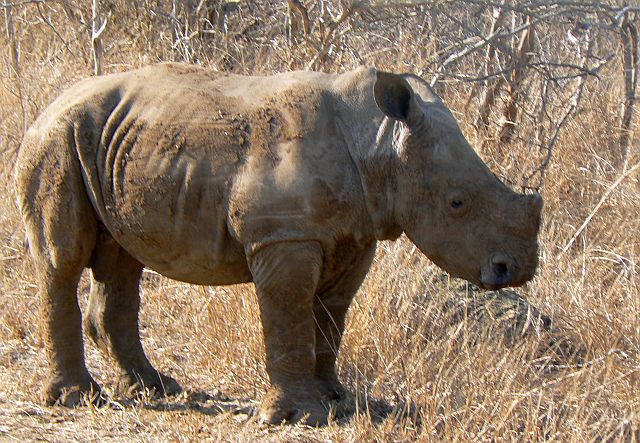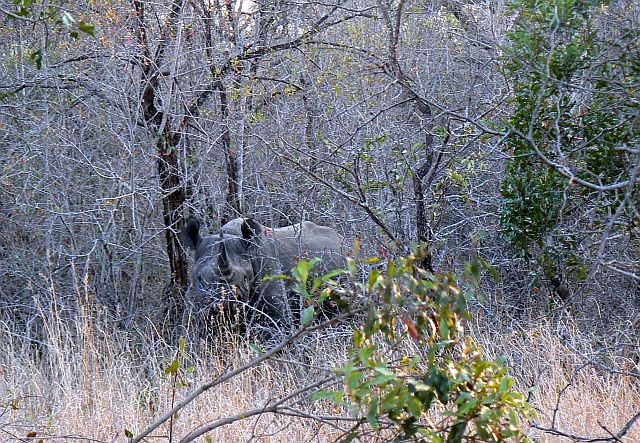Re: World Rhino Day on Africa Wild
Post by Toko » Mon Sep 22, 2014 4:15 pm
1. White rhinos graze on grasses, walking with their enormous heads and squared lips lowered to the ground.
2. Black Rhino usually stand with head held high.
3. A female rhino gives birth to only one calf at a time after a pregnancy of up to 18 month. Smaller species of rhino can develop in as few as 12 months.
4. Black Rhino eat bushes.
5. White rhino tend to be more gregarious while Black Rhino are usually solitary.
6. White rhino calf normally runs in front of its mother, with the mother using her horn to direct the calf by tapping it on the rear.
7. Rhinos sleep for around 8 hours a day.
8. Black rhino are susceptible to skin lesions caused by a filaria parasite. When visiting communal dung heaps along their trails, the rhinoceros pass the infection around the population: almost every individual has been infected by a small filariform worm called Stephanofilaria dinniki.
9. The shape of the horn differs between sexes: White Rhino bulls tend to have thicker and shorter horns.
10. Rhinos and oxpeckers share a symbiotic relationship that was once described as mutualistic, but recent research indicates that the relationship is more complex. The two animals are not entirely equal partners, with the relationship tipped in favor of the bird.
11. White rhino calves are dependent on their mothers for quite a long time. The calf is weaned at about a year old, and separates from its mother when it is 2 or 3 years old.
12. Rhinos have hair only on ears, tail tips and eyelashes.
13. White rhino cows reach sexual maturity at 4-5 years of age but do not reproduce until they reach 6-7 years. In contrast, bulls tend not to mate until they are 10-12 years old.
14. The closest living Rhino relatives are Taipirs, Horses & Zebras.
15. White rhino are mammals in the order Perissodactyla (odd-toed ungulates). An odd-toed ungulate has hooves that feature an odd number of toes on the rear feet. The middle toe on each hind hoof is usually larger than its neighbours. White rhino have three toes on each foot.
16. An adult white rhino can produce as much as 50 pounds of dung per day!
17. Diceros bicornis (Black Rhinoceros, Hook-lipped Rhinoceros) are Critically Endangered. The main threat is poaching.
18. Black Rhino calf runs behind it's mom.













